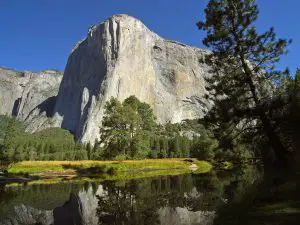Is Haleakala National Park Safe? (2023)

Haleakala National Park is located on the island of Maui in Hawaii. The park is known for its volcanic landscapes, its hiking trails, and its stunning views. Haleakala is also home to the Haleakala Crater, a giant crater that is one of the most popular tourist attractions on the island.
So, Is Haleakala National Park Safe?
Yes, Haleakala National Park is safe. There are some safety concerns and risks associated with hiking and being in the park, but these can be easily avoided by taking some simple precautions. We will address the concerns and safety risks of Haleakala National Park in this blog post.
Quick Links
What Are The Biggest Dangers At Haleakala National Park?
Haleakala National Park is one of the most popular hiking destinations in Hawaii. It’s known for its unique landscapes, stunning vistas, and diverse wildlife. But what many visitors don’t realize is that Haleakala is also home to some of the most dangerous conditions in Hawaii.
Haleakala is a volcano, and like all volcanoes, it is inherently dangerous. The terrain is unstable, and the weather can be unpredictable. The lava flows that created the unique landscapes can also be deadly. And then there are the animals. Haleakala is home to Hawaiian hawks, eagles, and owls, as well as the introduced mongoose. These animals can be aggressive, and they are not afraid to attack humans.
But don’t let all this deter you from visiting Haleakala National Park. With a little knowledge and preparation, you can safely enjoy all the park has to offer. In the following sections, we’ll cover the main safety concerns in detail and give you some tips on how to avoid them.
Is Haleakala National Park Safe At Night?
When hiking or spending time in any park at night, it is important to take some general safety precautions. Low visibility makes it more difficult to see obstacles in your path, so use a headlamp or flashlight. Be aware that there is more wildlife active at night, so you may want to make noise to avoid startling any animals.
There are some specific dangers to be aware of when hiking in Haleakala National Park at night. The most dangerous creatures in the park are the feral pigs. They root around in the underbrush and can be aggressive if they feel threatened. If you encounter a feral pig, make yourself as big as possible and make loud noises to scare it off. Another danger in the park at night is falling rocks. Haleakala is an active volcano, and rocks can loosen and fall without warning.
Here are some tips to stay safe while exploring Haleakala National Park at night:
- Make noise to avoid startling any wildlife
- Carry a headlamp or flashlight to help you see obstacles in your path
- Be aware of your surroundings at all times
- If you encounter a feral pig, make yourself as big as possible and make loud noises
- If you hear a rockfall, move away from the area as quickly as possible
Is It Safe To Go Alone To Haleakala National Park?
There are both risks and safety concerns when hiking Haleakala National Park alone. Being aware of your surroundings is the best way to avoid potential dangers. There are a few things to consider when hiking in Haleakala National Park. The terrain can be challenging, with steep cliffs and loose rocks. Wildlife is also present in the park, including feral pigs, cows, and goats. All of these factors can make hiking in Haleakala National Park more dangerous than hiking in other areas.
Despite the risks, there are also many reasons to hike Haleakala National Park alone. solitude can be found in nature, and hiking can be a peaceful and introspective experience. Haleakala National Park is an incredibly beautiful place, and hiking alone can help you to appreciate the beauty of the landscape in a different way. If you are considering hiking in Haleakala National Park, be sure to plan ahead, be aware of the risks, and hike with caution.
Is It Safe To Drink Water In Haleakala National Park?
Yes, it is safe to drink water in Haleakala National Park—but only if you purify it first. Untreated water from lakes, rivers, and streams can contain harmful bacteria and viruses that can make you sick. Even water from a clean-looking spring can be contaminated.
The best way to purify your water is to boil it for at least one minute. You can also use a portable water filter or purifier or sterilize your water with iodine tablets or bleach. Be sure to follow the directions on the iodine or bleach bottle, and remember that iodine will make your water taste and smell like iodine—bleach will not.
The Wildlife Of Haleakala National Park
Haleakala National Park is home to a wide variety of wildlife. Some of the most common animals you may encounter are:
- Mule deer
- wild pigs
- goats
- red-tailed tropic birds
- nene (Hawaiian goose)
- Hawaiian hoary bats
While most of the wildlife in Haleakala National Park is harmless, there are a few animals that you should be aware of.
Pigs
Pigs are the most commonly seen large mammal in Haleakala National Park. They are usually seen roaming in groups in search of food. While they may look harmless, they can be aggressive toward humans if they feel threatened. If you see a pig, do not approach it.
Bats
There are three species of bats that call Haleakala National Park home: the Hawaiian hoary bat, the greater short-tailed bat, and the lesser short-tailed bat. Bats are nocturnal creatures and are most active at night. While they are not aggressive, they may bite if they feel threatened. It is important to avoid contact with bats if possible.
Nene
The nene is a species of goose that is native to Hawaii. They are usually docile and are not known to be aggressive toward humans. However, they are a protected species, and it is against the law to harm them in any way. If you see a nene, admire it from a distance.
Hiking Safety Tips For Haleakala National Park
When hiking in Haleakala National Park, there are a few things to keep in mind in order to have a safe and enjoyable experience. First and foremost, it is important to be aware of the weather conditions and forecast before heading out on the trail. Haleakala can experience sudden changes in weather, so it is best to be prepared for anything.
Secondly, it is important to wear the proper clothing and footwear. Make sure to wear layers, as the temperature can change throughout the day. Wear closed-toed shoes with good traction to avoid slipping.
Lastly, be sure to pack plenty of food and water. It is important to stay hydrated and fueled while hiking. Pack more than you think you will need, just in case.
By following these simple tips, you can ensure a safe and enjoyable hike in Haleakala National Park.
Conclusion
In conclusion, Haleakala National Park is safe to visit. However, there are a few precautions that hikers should take. Hikers should always stay on the marked trails, be aware of their surroundings, and be prepared for changes in weather. By taking these precautions, hikers can enjoy all that Haleakala National Park has to offer.






